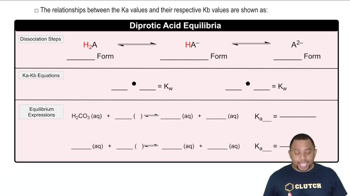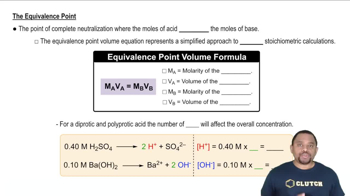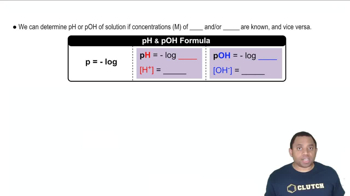Here are the essential concepts you must grasp in order to answer the question correctly.
Diprotic Acids and Their Ionization
Diprotic acids can donate two protons (H+) in a stepwise manner, characterized by two dissociation constants, Ka1 and Ka2. The first ionization produces a conjugate base (HA-) and the second ionization produces A2-. Understanding these ionization steps is crucial for analyzing the behavior of diprotic acids during titration.
Recommended video:
3 forms of Diprotic Acids
Equivalence Point in Titration
The equivalence point in a titration is reached when the amount of titrant added is stoichiometrically equivalent to the amount of analyte present. For diprotic acids, the first equivalence point occurs when half of the acid has been converted to its first conjugate base (HA-), which is essential for calculating pH and understanding the species present at this stage.
Recommended video:
Equivalence Point in Titration
pH and pKa Relationship
The pH at the equivalence point of a diprotic acid titration can be determined using the average of the pKa values of the acid. This relationship arises from the Henderson-Hasselbalch equation, which relates pH, pKa, and the ratio of the concentrations of the acid and its conjugate base, providing a way to predict the pH based on the acid's dissociation constants.
Recommended video:
 Verified step by step guidance
Verified step by step guidance

